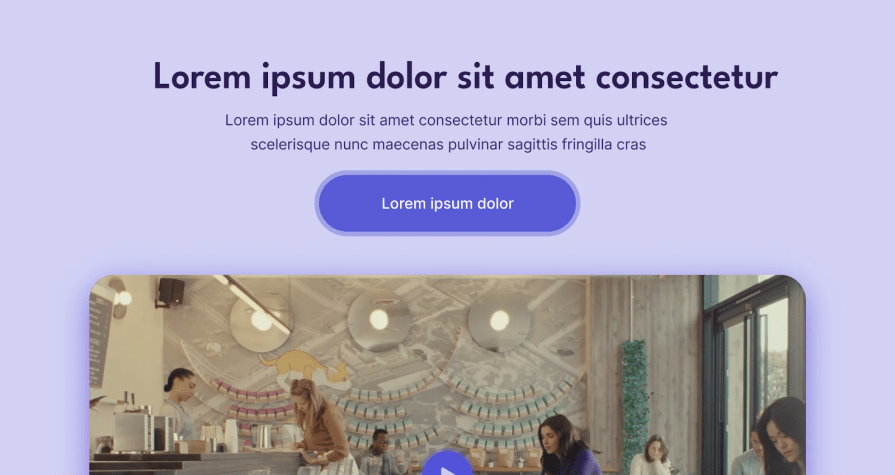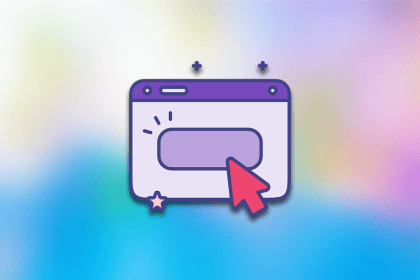Your design is only as good as your content. Without clear, purposeful content to guide users, even the best-looking designs can fall short. And this means UX designers and UX writers must work harmoniously in the design process if a design is to achieve its goal. But that’s easier said than done.

It’s hard enough working with team members from your discipline. And when you have to collaborate with people from other disciplines? That’s a whole new level of complexity unlocked. Issues such as conflicting priorities, undefined responsibilities, and even a lack of understanding of each other’s workflow can create bottlenecks in the design process.
So, how can UX designers and UX writers find common ground to make collaboration a breeze? Read on to find out.
In this article, I’ll talk about how UX writing and UX design intersect, how UX writers and designers can collaborate at different phases of the design process, the common mistakes that hinder effective collaboration, and the best practices for collaborating effectively.
But before we dive in, let’s lay the groundwork by defining the roles and responsibilities of both disciplines.
In a nutshell, a UX writer’s job is to craft the text users come across as they navigate a digital product. Their day-to-day tasks can vary depending on the team size, industry, project goals, etc. But, in general, UX writers are responsible for:
UX designers optimize the interaction between users and digital products. Like UX writers, their responsibilities can vary from product to product and company to company. However, in general, they’re responsible for:
Now that we’ve established how distinct each role is, let’s look at how they intersect.
While UX design and UX writing may seem like distinct roles, they share a common mission — to craft an engaging and satisfying user experience. To achieve this, both roles heavily rely on each other.
To illustrate what this looks like, let’s check out these edited versions of Loom’s homepage — one focusing on content, the other on design:

In this first version, the content clearly explains what the product does. But it’s missing a key element — visual cues, which makes it hard to know what to do on this page. Besides, it has zero visual appeal. Not a good look if you’re trying to attract visitors.

The second version, while visually appealing, doesn’t say much about what you can do on the page. You know there is a button, but what does it do?
Put simply, UX designers need UX writers, and vice versa.
Given this strong interdependence, UX writers and UX designers must work closely throughout the design process to ensure a cohesive user experience. But what does this collaboration look like at various stages of the design process? You’re about to find out.
All things being equal, UX writers, like UX designers, should be involved in a design project right from the start. That way, everyone can be on the same page at every phase of the design process.
Here, we’ll briefly touch on the phases a product typically goes through from inception to launch and how UX writers and UX designers can work together in each one.
It’s easy to see research as a job for UX researchers and designers. However, by involving a UX writer in the research process, they can learn about users’ language preferences and expectations, allowing them to create content that truly resonates with the audience.
In this phase, UX designers and UX writers work together to:
Go over early insights to understand how the users communicate and ensure it’s reflected in the final product. With strategies such as message mining, UX writers can identify common phrases and vocabulary among users
This phase typically involves all UX team members, as their unique perspectives are essential for creating innovative design solutions. Here, UX writers and UX designers work together to:
By now, the design is beginning to take shape, and the various features are being named. In this phase, UX designers and UX writers work together to:
In this phase, the design comes to life, and UX writers create the final copy. Here, UX designers and UX writers work together to:
At this point in the project, the design and content are ready for feedback from stakeholders. Here, UX writers and UX designers work together to:
Now, it’s time to put the design in front of users and observe their interactions. Here, UX designers and writers collaborate to:
At this stage, the design is ready for feedback and approval from executives. During the presentation, UX designers and UX writers work together to:
The main focus in the phase is ensuring that the transition from design to development is as smooth as possible. Here, UX designers and UX writers work together to:
By now, the product is ready and is released to the public. The team listens for feedback for post-launch iterations. Here, UX designers and UX writers collaborate to:
It seems straightforward enough, doesn’t it? Well, that is if you can avoid the common mistakes we’re about to discuss.
Let’s look at four common mistakes that can wreak havoc on collaboration between UX designers and UX writers:
If you’re a UX writer, you’ve probably experienced this at some point in your career. You’re handed a bunch of screens with poorly written text (or even the good ol’ Lorem Ipsum) and asked to “improve the copy.” By this point, the designers have done their part, leaving you without a chance to influence the design direction or content structure.
This is a recipe for disaster, as the copy should influence the design, not vice versa. Remember — copy and content should come before UX design.
It’s easy to see research as a job for UX researchers and designers. After all, they’re the experts at conducting user interviews and analyzing research data. But if you don’t let the UX writer jump on board at this early phase of the design process, you’ll have to drag them along later. This can bring setbacks to the design process. And the worst-case scenario? You’ll end up with content that doesn’t reflect the users’ language.
So, involve both UX writers and designers right from project kick-off. Being well-versed in the problem the product is trying to solve, who the product is trying to help, and who the stakeholders are will help the UX writers succeed.
When creatives collaborate, conflicts are bound to arise. People will have differing opinions, and feedback may not always come across as intended. And that’s fine. These differing opinions lead to a great design.
However, if not properly managed, conflicts can quickly become a problem. To avoid such problems, use strategies such as:
Earlier, we touched on the roles and responsibilities of UX designers and UX writers. While both roles have some clear distinctions, there’s certainly a lot of overlap. For example, even though research is seen as the designer’s job, writers should be involved.
To keep things running smoothly, the product manager (or UX lead) must define individual roles and areas of collaboration at the start of a project.
Now that we’ve covered some of the most common mistakes, let’s explore some strategies for overcoming them.
Here are four strategies to encourage effective collaboration between UX designers and UX writers.
UX writers and UX designers need to know both the overall project goal and their individual objectives. They can collaborate better when each individual understands their specific responsibilities and how their work fits into the bigger picture.
As we established earlier, the best time to start collaborating is at project kick-off. That way, everyone is aligned on all aspects of the project, and no one has to play catch up.
Working in silos is a surefire way to create a disjointed user experience, as UX design and UX writing go hand in hand. Whether it’s through stand-up meetings, Slack messages, Figma comments, or even shared document reviews, keeping communication lines open helps ensure everyone is on the same page.
Feedback from UX designers to UX writers, and vice versa, is essential as it ensures alignment on tone, messaging, and visuals. But the key is knowing how to give and receive relevant feedback. The following tips can help:
Design and content go hand-in-hand. You can’t have one without the other and expect a good user experience. That’s why UX writers and UX designers must be on the same page in the design process.
For a stress-free collaboration, you must avoid the common pitfalls associated with creative work. Learn about each other’s roles, communicate frequently, give and receive good feedback, and set clear goals. And most importantly, start collaborating early!
When design and content are aligned from the start, the result is a product that looks great and works even better.
LogRocket lets you replay users' product experiences to visualize struggle, see issues affecting adoption, and combine qualitative and quantitative data so you can create amazing digital experiences.
See how design choices, interactions, and issues affect your users — get a demo of LogRocket today.

Glassmorphism is a UI trend that’s used to create the illusion of a glass-like texture to give a fresh, transparent feel to interfaces.

Don’t waste wait time. Here are my personal fav smart ways to turn loading screens into delightful, helpful moments your users will actually enjoy.

Buttons are one of the most common components in UX design. Learn how to create buttons that guide users effectively.

Improve loading UX with skeleton screens. This guide breaks down what they are, how they work, and how top apps use them.